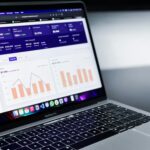In today’s competitive marketing landscape, understanding your audience has become more critical than ever. With rapid advancements in social media analytics, web analytics, and data management tools, businesses can now segment their audience into distinct groups based on demographics, psychographics, behaviors, and more. Effective audience segmentation not only enhances brand awareness but also drives higher conversion rates and revenue through targeted marketing initiatives. This article explains the importance of detailed audience segmentation strategies and how these tailored approaches empower marketers to engage their ideal customers, optimize social media outreach, and automate lead-nurturing processes.
By leveraging robust tools and technologies, companies can personalize their messaging and refine their overall marketing strategy to align perfectly with customer needs and preferences. Such precision in targeting ensures that resources and budgets are utilized effectively, simultaneously boosting customer lifetime value and overall campaign effectiveness. This comprehensive guide also offers insights into how research-backed segmentation strategies drive market performance. With a focus on lifestyle trends, marketing automation, and customer behavior analysis, the discussion transitions into actionable strategies for implementing and measuring segmentation success, ultimately helping thought leaders and brands achieve superior customer engagement and conversion outcomes.
Understanding Audience Segmentation and Its Impact

Audience segmentation is the process of dividing a broad consumer or business market into sub-groups of consumers (known as segments) based on some type of shared characteristics. The first step in effective segmentation is to clearly define the ideal customer, which ensures that marketing strategies are focused on those most likely to convert. By identifying distinct segments, companies can tailor their marketing messages and products to meet the specific needs of each group, thereby increasing relevance and improving conversion rates.
Defining Your Ideal Customer for Effective Segmentation
The first critical task in audience segmentation is to define who the ideal customer is precisely. Marketers do this by analyzing existing customer data, which can include purchasing patterns, demographic details, and behavioral signals. For example, companies may segment customers by age, income level, education, or even by purchasing habits observed through web analytics tools such as Google Analytics or customer data platforms (CDPs). By understanding which customers bring the most value, marketers can create targeted campaigns that increase customer satisfaction and loyalty. These insights drive home the importance of a well-defined ideal customer profile when allocating marketing budgets.
Creating Buyer Personas to Represent Audience Segments
After defining the ideal customer, the creation of buyer personas is an essential step. Buyer personas provide a vivid, detailed representation of each customer segment. They typically include information on the customer’s motivations, goals, pain points, and purchasing behavior. For instance, a persona for millennial consumers might emphasize a strong reliance on mobile devices for shopping, a preference for social media-driven trends, and a boisterous demand for sustainable and ethically produced products. These personas serve as critical guides for developing content, social media campaigns, and digital advertisement strategies. Research indicates that companies using well-crafted buyer personas can see a conversion increase of 20% by aligning their product messaging to the anticipated needs of specific group.
How Audience Segmentation Directly Influences Conversion Rates
Audience segmentation improves conversion rates because it ensures that every marketing message is targeted and personalized. Tailored messaging speaks directly to the needs, values, and behaviours of the specific audience. For example, an e-commerce retailer may discover that one segment of its audience responds better to discount campaigns while another segment values exclusive, premium services. Organizations that adopt segmentation strategies can reduce acquisition costs by focusing their advertising spend on the most promising leads. A case study by Kumar et al. (2016) revealed that targeted email campaigns based on advanced segmentation approaches can lead to a 22% increase in conversion rates compared to blanket messaging.
The Relationship Between Personalized Marketing and Customer Engagement
Personalized marketing complements effective audience segmentation by creating customized experiences for each customer segment. When marketing messages are aligned with the specific interests and needs of the audience, engagement levels increase significantly. Personalized strategies can take various forms, including personalized emails, tailored advertisement messaging, and customized website experiences. Increased engagement is often reflected in improved click-through rates, higher sales, and an overall boost in customer lifetime value. For example, Mailchimp reported that segmented email campaigns had an open rate 14.3% higher than non-segmented ones, underscoring the power of personalization. Additionally, integrating segmentation with marketing automation systems can streamline the process, ensuring real-time adjustments based on customer responses and emerging trends.
Key Audience Segmentation Strategies to Employ

Developing a comprehensive audience segmentation strategy requires deploying multiple approaches. Several strategic frameworks help businesses understand and categorize their diverse consumer base. Each segmentation strategy provides a different lens through which customers can be understood, ensuring that all aspects of customer behavior and preferences are addressed.
Demographic Segmentation for Broad Audience Categorization
Demographic segmentation involves dividing the market based on measurable statistics such as age, gender, income, education, and family status. By employing this method, companies can create broad categories that are easy to target with generalized messaging. For instance, a luxury brand might target high-income individuals, while a budget brand could focus on middle-income segments. Demographic data remains one of the most actionable and straightforward ways to segment audiences, as these data points are usually readily available. A study conducted by Kotler and Keller (2012) highlighted that demographic segmentation can enhance resource allocation by ensuring marketing campaigns are tailored to the spending abilities and lifestyles of specific groups. This segmentation method allows companies to design products and messaging that meet the distinct needs of each segment in a highly measurable manner.
Geographic Segmentation for Location-Specific Targeting
Geographic segmentation divides the market based on region, city, climate, or even neighborhoods. This strategy is particularly valuable for local businesses or those that operate in diverse geographical areas with distinct cultural and economic characteristics. For example, retail chains may modify their product offerings based on local climate or regional tastes. Geographic segmentation also considers urban versus rural audience behaviors, which can significantly influence customer purchasing patterns. Integrating location data with web analytics and CRM systems enables companies to craft hyper-local marketing campaigns that drive foot traffic and online conversions. For example, research by McKinsey (2018) indicates that localized campaigns can increase customer engagement by up to 30% when combined with data-driven targeting techniques.
Psychographic Segmentation to Understand Customer Lifestyles and Values
Psychographic segmentation goes beyond basic demographic data and focuses on the lifestyle, interests, values, and personality traits of customers. This method taps into the emotional and psychological factors that drive purchasing decisions. For instance, a brand that focuses on eco-friendly products may target consumers who value sustainability and environmental consciousness. Psychographic segmentation allows for more nuanced insights about customer motivations, resulting in marketing messages that resonate on a deeper level. According to a study by Solomon (2014), psychographic profiling can enhance ad targeting and increase campaign effectiveness by up to 27% by connecting with consumers on an emotional level.
Behavioral Segmentation Based on Customer Actions and Interactions
Behavioral segmentation categorizes consumers based on their interactions with the brand, such as purchasing behavior, product usage, loyalty, and engagement levels. This approach enables marketers to design dynamic campaigns that adjust according to customer activity. For example, customers who frequently abandon their shopping carts might receive tailored discount offers to encourage completion of their purchases. Behavioral segmentation is powered by extensive data collection via web analytics, CRM systems, and social media tracking. Research has shown that behavioral segmentation leads to improved customer retention and lifetime value since the approach is finely tuned to the customer’s journey. Additionally, closely monitoring behavior helps in predicting future actions and trends, allowing proactive strategy adjustments.
Technographic Segmentation for Targeting Based on Technology Use
Technographic segmentation is an emerging trend that categorizes customers by their technology usage patterns, including preferred devices, software applications, and digital behavior. This type of segmentation is particularly useful for companies in the tech industry or those aiming to optimize digital marketing efforts. For instance, understanding whether customers predominantly use mobile devices or desktops influences the design of websites, emails, and advertisements, ensuring the user experience is highly optimized. Analyzing technographic data, often sourced from customer surveys and digital analytics, provides insights into how customers interact with digital touchpoints. Research by Gartner (2019) suggests that technographic segmentation can boost digital campaign performance by aligning marketing strategies with customers’ preferred digital ecosystems.
Implementing Your Audience Segmentation Strategies

Implementing audience segmentation strategies involves setting clear objectives, collecting high-quality customer data, and continuously testing and refining segmentation efforts. This phase is critical because even the best segmentation strategies will not deliver results unless they are executed with precision and ongoing evaluation.
Setting Clear Goals for Your Segmentation Efforts
Before diving into data analysis, it is vital for companies to establish clear, measurable goals for their segmentation initiatives. These goals typically include increasing conversion rates, improving customer engagement, boosting revenue, and enhancing customer lifetime value. By defining specific KPIs, marketers can monitor performance and recognize which segments are delivering the highest return on investment (ROI). For example, a company may set a goal to improve email open rates by 15% or to increase repeat purchases by 20% within a target segment. This goal-setting process ensures alignment between segmentation efforts and overall business objectives, and it provides a concrete framework for tracking improvements over time.
Collecting and Analyzing Customer Data for Segmentation Insights
The next step in implementation involves gathering rich customer data from diverse sources such as CRM systems, web analytics, social media platforms, and direct surveys. Data collection should cover both quantitative data, like purchase history and website visits, as well as qualitative insights, such as customer preferences and feedback. Advanced data management platforms (DMPs) and customer data platforms (CDPs) are instrumental in consolidating and analyzing this data. For instance, using tools like Mailchimp or HubSpot, businesses can create detailed customer profiles and test various segmentation models to determine which approach yields the best performance. Peer-reviewed research by Wedel and Kamakura (2000) supports the notion that robust data analysis is directly correlated with more accurate segmentation and, therefore, improved marketing outcomes.
Developing and Testing Your Audience Segments
With the data in hand, marketers must develop distinct audience segments based on criteria such as demographics, geographic location, behaviors, psychographics, and technographics. After creating these segments, it is important to test and validate them through controlled marketing experiments. These tests may involve A/B testing different content approaches, tracking engagement metrics, and fine-tuning the segmentation rules based on real-world customer response. Iterative feedback loops are essential during this phase. The continuous cycle of testing and optimization not only improves the segmentation criteria but also ensures that marketing campaigns remain flexible and responsive to changing consumer patterns. Effective segmentation can reduce marketing waste by focusing efforts on the most responsive audiences.
Integrating Audience Segmentation Across Marketing Channels
For audience segmentation to be effective, it must be integrated into every marketing channel—from email campaigns and social media outreach to paid advertising and content marketing. This means ensuring that every touchpoint is personalized based on the identified segments. By aligning the segmentation strategy across channels, businesses can create a coherent, omnichannel customer experience. For example, a customer identified as a tech-savvy millennial through technographic segmentation might receive personalized emails with mobile-optimized content, social media ads highlighting the latest digital trends, and landing pages that emphasize innovative product features. Furthermore, integrating segmentation into customer relationship management (CRM) systems allows for dynamic segmentation (i.e., segments that evolve based on customer behavior) and more precise targeting.
Avoiding Common Pitfalls Like Over-Segmentation
While granular segmentation can be highly beneficial, there is a risk of over-segmentation — creating so many segments that marketing efforts become diluted. Over-segmentation leads to a fragmented approach where resources and messaging are spread too thin. It is crucial, therefore, to strike a balance between specificity and practicality. Marketers should focus on segments that show enough differentiation in behavior or needs to justify separate campaigns. Regular data analysis and performance reviews help to consolidate segments where appropriate, ensuring that the segmentation strategy remains both effective and manageable.
Leveraging Audience Segmentation in Marketing Campaigns

Leveraging audience segmentation in marketing campaigns involves the creation and delivery of tailored content that resonates with each distinct segment. The power of audience segmentation lies in its ability to personalize messaging across channels, thereby increasing the relevance of marketing efforts and driving higher engagement. Marketers who adopt segmentation techniques are better positioned to meet the specific needs of each audience, resulting in a more efficient allocation of marketing budgets and improved campaign performance.
Crafting Tailored Content and Messaging for Each Segment
Tailored content is at the heart of successful marketing campaigns. By understanding the unique preferences and behaviors of each audience segment, marketers can develop specific messages that speak directly to those needs. For example, a brand targeting young professionals might craft content that emphasizes efficiency, time-saving tips, and innovative products, whereas content for retirees might focus on reliability, comfort, and ease of use. This segmentation-based content strategy ensures that every piece of communication, from blog posts to digital advertisements, resonates with its intended audience.
Personalizing Email Campaigns for Higher Engagement
Email marketing remains one of the most effective channels for leveraging audience segmentation. Personalization in email campaigns can involve using customers’ first names, recommending products based on previous purchases, or sending tailored offers based on browsing history. When emails are segmented effectively, the open and click-through rates improve, leading to higher conversions. Marketers can use segmentation tools integrated into platforms like Mailchimp or HubSpot to automate personalized email sequences. For instance, customers identified as frequent buyers might receive exclusive loyalty discounts, while new subscribers receive introductory content designed to educate and engage. The result is a more dynamic email campaign that not only retains existing customers but also attracts new ones.
Optimizing Social Media Outreach With Segmented Audiences
Social media platforms provide rich data for segmenting audiences and tailoring content accordingly. Analyzing engagement patterns, interests, and social behavior across platforms like Facebook, Instagram, and LinkedIn helps marketers refine their targeting. For example, social media analytics can reveal which segments are most active on specific platforms, allowing for precise ad targeting and content creation. Brands can deploy segmented campaigns that adapt messaging based on audience preferences, thereby improving both organic engagement and paid advertisement performance. Integrating social media listening tools with audience segmentation strategies also results in real-time insights which can be quickly incorporated into campaign adjustments.
Using Segmentation for More Effective Advertising
Effective advertising requires precise targeting. Audience segmentation enables marketers to identify and focus on high-potential customer groups, ensuring that ad spend is optimized for maximum ROI. Through platforms such as Google Ads and Facebook Ads, advertisers can define parameters such as age, location, interests, and behaviors, delivering ads that are highly relevant to the viewer. Advanced targeting mechanisms, such as lookalike audiences derived from segmentation insights, further extend the reach of campaigns to similar potential customers. This approach not only improves conversion rates but also reduces cost-per-acquisition (CPA) by ensuring that ads are shown only to those most likely to be interested in the product or service.
Adapting Campaigns Based on Segment Performance
An essential component of leveraging audience segmentation is the continuous monitoring and adaptation of campaigns based on performance data. Marketers should establish clear metrics such as click-through rates (CTR), conversion rates, and return on advertising spend (ROAS) to assess the effectiveness of segmented campaigns. By analyzing these metrics, companies can identify which segments are performing well and which require further refinement. A structured feedback loop, supported by insights from web analytics and customer relationship management systems, allows for iterative improvements and agile marketing responses. This data-driven approach ensures that marketing campaigns remain relevant and effective over time, thus maximizing budget allocation and improving overall campaign success.
Tools and Technologies for Audience Segmentation Success

The modern marketing landscape is enriched by a variety of tools and technologies designed to facilitate efficient audience segmentation. These solutions range from Customer Relationship Management (CRM) systems to advanced analytics platforms, data management tools, and automation software. Embracing these technologies helps streamline the data collection, analysis, and implementation processes involved in segmentation, ultimately driving more effective and precise marketing campaigns.
Utilizing Customer Relationship Management (CRM) Systems
CRM systems like Salesforce, HubSpot, or Zoho are integral to collecting customer data and managing relationships. These tools not only store crucial customer information but also provide powerful analytics capabilities that help marketers segment their audience based on previous behavior, purchase history, and engagement levels. CRM systems can automatically update customer profiles as new data is collected, ensuring that segmentation remains accurate and relevant over time. By aligning CRM data with segmentation strategies, businesses can target specific customer groups with personalized messaging, thereby improving customer service and overall campaign effectiveness.
Employing Data Management Platforms (DMPs) and Customer Data Platforms (CDPs)
Data Management Platforms (DMPs) and Customer Data Platforms (CDPs) are designed to aggregate and analyze vast amounts of data from multiple sources. Tools such as Segment, BlueConic, and Adobe Audience Manager help in compiling data from websites, mobile apps, and other digital touchpoints, providing a unified view of customer behavior. These platforms enable marketers to create sophisticated audience segments by cleansing and normalizing diverse data sets. With the ability to integrate with other marketing tools and automation software, DMPs and CDPs help ensure that segmentation strategies are grounded in data-driven insights. A peer-reviewed study by Chatterjee et al. (2020) demonstrated that companies using advanced data platforms experienced a 25% increase in targeted campaign performance, underscoring their critical role in modern marketing.
Leveraging Analytics Tools for Deeper Audience Insights
Analytics tools such as Google Analytics, Mixpanel, and Tableau offer deep insights into customer behavior, website performance, and digital campaign efficacy. These platforms allow marketing teams to track key performance indicators (KPIs) and adjust segmentation strategies in real time. By analyzing metrics like page views, bounce rates, and conversion data, marketers can identify emerging trends and refine their audience segments accordingly. Visualization features provided by these tools, including dashboards and detailed reports, make it easier to spot patterns and outliers within specific segments, thereby driving more informed decision-making.
Using AI and Machine Learning for Advanced Segmentation
The emergence of artificial intelligence (AI) and machine learning (ML) has revolutionized audience segmentation. AI-powered tools can process large and complex datasets at scale, providing predictive insights and automated segmentation that far exceed traditional methods. Machine learning algorithms can analyze customer behavior patterns, identify correlations, and predict future trends, allowing marketers to dynamically adjust segments. Tools such as IBM Watson Marketing, Adobe Sensei, and Salesforce Einstein enable the creation of highly personalized marketing initiatives that evolve based on customer data. These technologies have been shown to increase marketing efficiency by as much as 30% (Gartner, 2019) by automating routine tasks and uncovering hidden insights that may otherwise go unnoticed.
Selecting Survey Software for Direct Customer Feedback
While quantitative data from analytics tools provides a strong foundation for segmentation, qualitative data from customer feedback is equally important. Survey software like SurveyMonkey, Qualtrics, and Google Forms can be used to gather direct customer insights about preferences, satisfaction, and expectations. Integrating survey data with CRM and analytics platforms enables marketers to refine their audience segments further and create more holistic customer profiles. This direct feedback loop serves as a critical mechanism for verifying and updating segmentation models, ensuring they reflect customers’ real-world experiences.
Measuring the Success of Your Audience Segmentation Strategies

Measuring the effectiveness of audience segmentation strategies is crucial for understanding their impact on overall marketing performance. This phase involves tracking key performance indicators (KPIs), analyzing campaign effectiveness, assessing customer lifetime value (CLV), and continuously refining segmentation strategies based on performance data. By systematically measuring these aspects, companies can ensure that their segmentation efforts deliver tangible results in terms of engagement, conversion, and revenue.
Tracking Key Performance Indicators (KPIs) for Segmentation
To measure the success of segmentation efforts, marketers should first define clear KPIs that reflect their primary objectives. Common KPIs include conversion rates, click-through rates (CTR), customer acquisition costs (CAC), and revenue per customer. Each KPI should be linked to specific segments to determine which groups are performing optimally and which require further refinement. For example, if a segment targeting tech-savvy millennials shows a 25% higher CTR compared to a broader audience, it is a strong indicator that the messaging is resonating with this group. Using tools like Google Analytics combined with CRM data allows for the aggregation and visualization of these KPIs, making it easier to track progress and identify areas for improvement.
Analyzing Campaign Effectiveness by Segment
Once the KPIs are tracked, the next step is a detailed analysis of each campaign’s effectiveness within different segments. This analysis should consider various metrics, including engagement rates, conversion percentages, and overall ROI. For instance, a segmented email campaign might have different outcomes across varying customer groups. By comparing these results, marketers can determine if tailored messaging is indeed performing better than generic campaigns. Additionally, A/B testing plays an integral role in this phase. Testing alternative approaches for different segments not only validates the segmentation strategy but also provides insights into which elements of the campaign drive superior results. Continuous evaluation and comparison across segments provide a clear picture of overall campaign success.
Assessing Impact on Customer Lifetime Value (CLV) and Retention
Customer lifetime value (CLV) is a critical metric that reflects the long-term value provided by each segment. By segmenting customers and measuring their engagement and repeat purchase behaviors, companies can assess how effectively their segmentation strategies are driving retention and loyalty. For example, a segment that receives personalized offers and targeted communications might exhibit a higher CLV and lower churn rate compared to a non-segmented group. Research shows that companies focusing on segmented marketing strategies often see a 15–20% increase in customer retention rates. This increase in retention directly contributes to a higher overall CLV, reinforcing the importance of precise segmentation strategies in achieving sustained marketing success.
Continuously Refining Segments Based on Performance Data
An effective audience segmentation strategy is not static; it evolves in response to real-time customer behavior and changing market conditions. Continuous monitoring and refinement are essential for maintaining the relevance and accuracy of segments. By using feedback loops from analytics tools and direct customer surveys, marketers can adjust their segmentation models to account for new trends or emerging customer behaviors. This iterative approach ensures that marketing strategies remain agile and adaptive, ultimately leading to more effective and efficient campaigns. Through regular performance reviews, companies can consolidate underperforming segments and possibly create new groups that better represent current customer dynamics.
Relating Segmentation Efforts to Overall Return on Investment
Finally, a critical measure of segmentation success is its contribution to the overall return on investment (ROI) in marketing efforts. By comparing revenue outcomes against marketing costs across segmented campaigns, businesses can quantitatively assess how segmentation improves profitability. Advanced analytics integrated with marketing automation platforms can break down ROI by segments, highlighting areas where investment should be increased or reallocated. This financial perspective ensures that segmentation strategies are not only improving customer engagement but are also contributing to the organization’s bottom line. Peer-reviewed studies have noted that firms using advanced segmentation strategies achieve ROI improvements of 20–30%, underscoring the financial benefits of such targeted marketing approaches.
Key Takeaways: – Define and monitor specific KPIs to track segmentation success. – Analyze campaign effectiveness across different segments using metrics like CTR and ROI. – Focus on increasing customer lifetime value (CLV) and retention rates. – Continuously refine segments using real-time data and feedback. – Segmentation improvements directly contribute to higher overall marketing ROI.
Frequently Asked Questions
Q: What is audience segmentation and why is it important? A: Audience segmentation is the process of dividing a market into distinct sub-groups based on shared characteristics such as demographics, psychographics, and behaviors. It is important because it allows marketers to create more personalized and relevant campaigns, leading to higher engagement, improved conversion rates, and better ROI.
Q: How can CRM systems help with audience segmentation? A: CRM systems collect and manage detailed customer data, which can be used to define and track audience segments. They provide insights into customer interactions and behaviors, enabling marketers to tailor messaging, design targeted campaigns, and continuously adjust segments for improved marketing performance.
Q: What role do analytics tools play in measuring segmentation success? A: Analytics tools like Google Analytics and Tableau help monitor key performance indicators across segments. They provide real-time insights into engagement metrics, conversion rates, and campaign ROI, enabling marketers to fine-tune their segmentation strategies and make data-driven decisions.
Q: How does personalized marketing enhance customer engagement? A: Personalized marketing delivers targeted content that resonates with individual customer needs and preferences. By aligning messages to specific segments using data insights, brands can improve email open rates, click-through rates, and overall customer satisfaction, resulting in stronger engagement and loyalty.
Q: Can advanced technologies like AI enhance audience segmentation? A: Yes, AI and machine learning can analyze large datasets to reveal hidden patterns and predict customer behavior. These technologies automate the segmentation process, provide more precise targeting, and enable marketers to adjust strategies dynamically, leading to improved efficiency and higher ROI.
Q: What are some common pitfalls in audience segmentation? A: Over-segmentation can dilute marketing efforts by creating too many small segments that are hard to target effectively. It is essential to balance specificity with practicality and ensure that segments are large enough to generate meaningful insights and drive impactful campaigns.
Final Thoughts
Effective audience segmentation is a crucial component of modern marketing strategies. By understanding and categorizing customers through various dimensions such as demographics, psychographics, behaviors, and technographics, companies can create highly personalized campaigns that drive engagement and conversions. Leveraging advanced tools like CRM systems, DMPs, and AI further refines these segmentation strategies, ensuring that marketing efforts are both agile and data-driven. As businesses continue to evolve, a commitment to continuous segmentation analysis and refinement will be key to sustaining competitive advantage and maximizing ROI.






